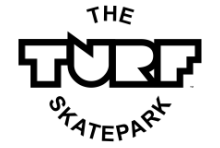In the mid 1970’s there was skateboarding boom in the United States, which started on the coasts in California and Florida. Early on, concrete drainage ditches and empty swimming pools became popular places to skate. Skateboarding magazines popularized the sport and innovations in skateboard design enabled skaters to do things never before possible.
Entrepreneurs were quick to capitalize on the skateboarding craze by building private skateparks all over the country. Jerry ... Meer lezen
In the mid 1970’s there was skateboarding boom in the United States, which started on the coasts in California and Florida. Early on, concrete drainage ditches and empty swimming pools became popular places to skate. Skateboarding magazines popularized the sport and innovations in skateboard design enabled skaters to do things never before possible.
Entrepreneurs were quick to capitalize on the skateboarding craze by building private skateparks all over the country. Jerry Steuernagel opened The Turf in Greenfield in 1979. Originally named the Surf-N-Turf, it was designed by California architect Art Kent. It was unique in that it was one of the few places in which the swimming pool-like bowls were enclosed inside a building. This allowed for year round skating. In 1987, the park was rebranded simply as the Turf. Besides the locals, many famous professionals, including Tony Hawk, skated there for special events. People traveled from around the country to skate the Turf because of the national reputation it had developed.
Skating bowls and transitions lost popularity as skateboarding moved back to the street. After the Turf finally closed in 1996, the building was eventually demolished, and the bowls were filled with gravel and covered with soil. Most people thought that was the end of the Turf. But deep underground, the bowls remained intact, buried and forgotten.
The land was eventually purchased by the Wisconsin Department of Transportation. They needed a small portion of it to build an off ramp. In 2010, while digging to construct the off ramp, contractors exposed a corner of one of the bowls. News of the discovery quickly spread through the skateboarding community. People who had spent years of their youth skating the Turf rushed to the site. Using hand shovels and buckets they dug out tons of gravel from the bowls.
Late into the night, when one of the bowls was finally swept clean, they put down their shovels and grabbed their skateboards. Like a trip back in time, they skated it, as they had done so many years before. The next morning, the bowls were refilled with gravel and buried again. News of the incident resulted in hundreds of calls, letters and emails, from all over the country, urging the city to rebuild the Turf. Mayor Michael Neitzke pledged that one day he would rebuild it, and bring back the legendary park for future generations of skaters to experience.
Efforts to bring back the Turf continued for years, fueled by the skateboarding community and promoted on social media. Opportunity presented itself in 2019 when, after extensive negotiations with the Wisconsin Department of Transportation, Mayor Michael Neitzke purchased the land for $1, on the condition it will forever be a public park. In the spring of 2020, in what was essentially an archeological dig site of skateboarding history and culture, Greenfield Public Works excavated and inspected all 5 of the original bowls. Although damaged, it was determined that they can be reconstructed, and incorporated into a new and larger Turf Skatepark.
Volledige tekst verbergen